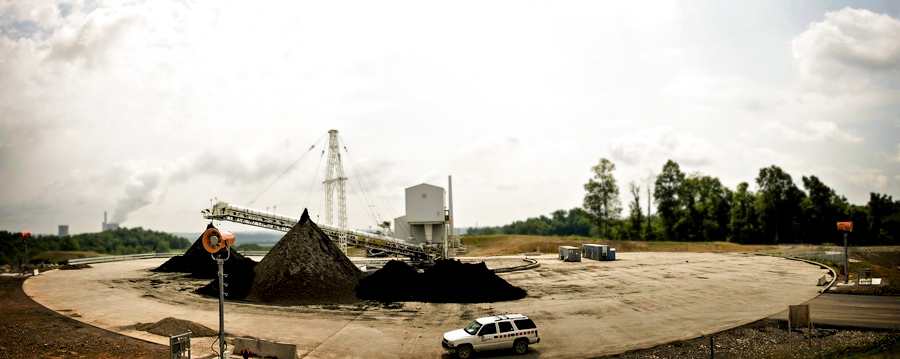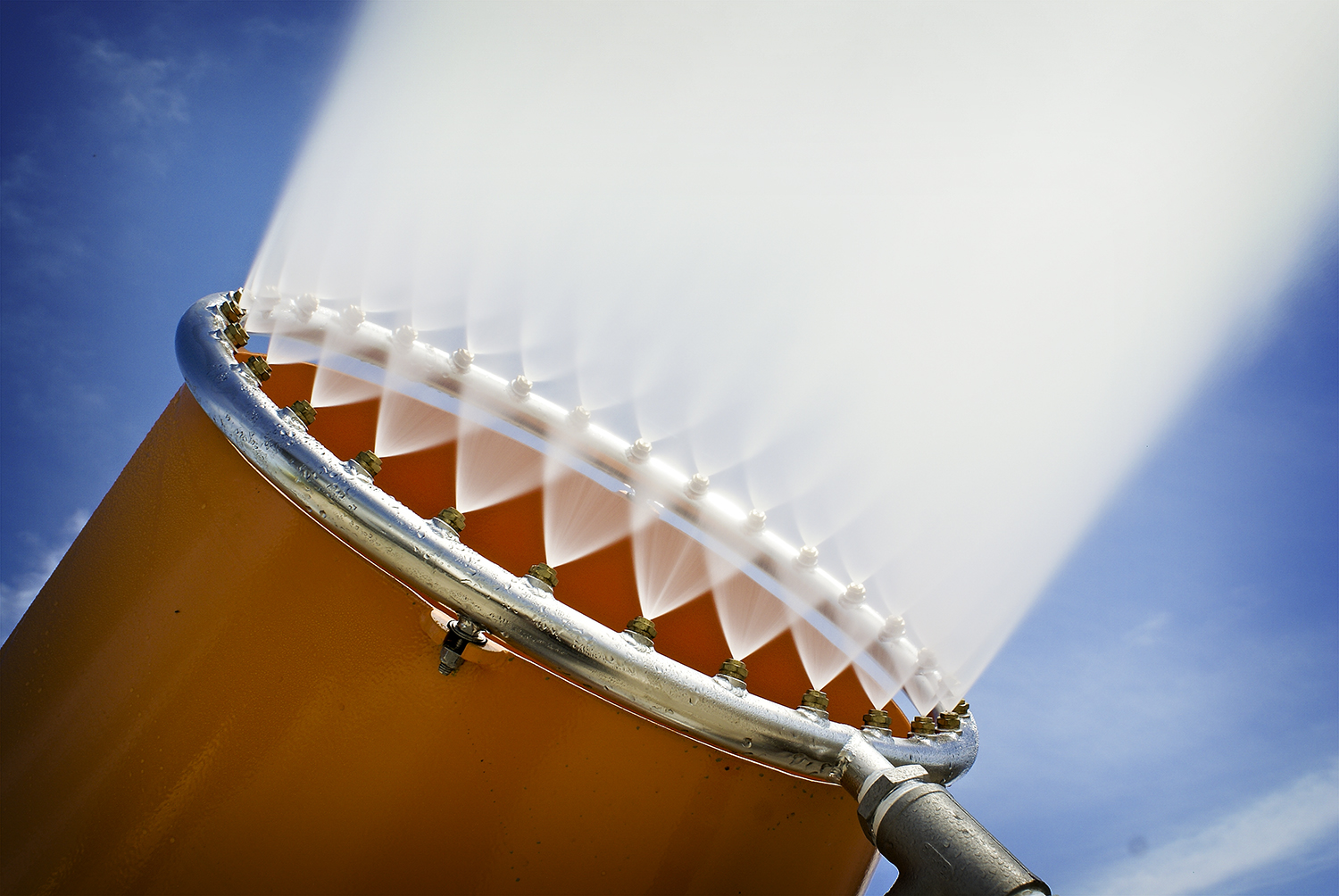For decades, operations have relied on hoses and sprinklers in hopes of controlling fugitive dust.
Now, atomized mist technology offers a modern alternative. It has already been deployed successfully in petcoke handling operations. The technology also shows great promise for controlling coke fines at the refinery, including at the chutes, pits, and drums.

The petcoke industry faces mounting scrutiny with high profile fugitive dust cases. Local residents have also become more aware and vocal about the effect of dust on the community. In some locations, new regulations require petcoke storage facilities to fully enclose their storage piles — a complex and expensive approach.
In this climate, the industry must take a proactive approach to effective dust control in order to maintain growth. New methods need to be considered.
New vs. Old
Hoses and sprinklers are good at what they were designed to do: provide maximum water flow. To atomize a substance is to convert it into very fine particles or droplets. Atomized mist dust suppression canons use special nozzles to fracture the stream into millions of very fine droplets of water. That is the key difference between traditional forms of wet dust control and atomized mist: We are achieving a mist – not a stream.

The distinction is important for two reasons: atomized mist uses less water and it is more effective at capturing airborne dust.
Less water usage
Industrial sprinklers typically use around 20 times more water than atomized mist canons that cover comparably sized areas. And using less water is valuable beyond just the savings in water costs. When it comes to water for dust suppression, less is always more. Less water means:
- Reduced storm water effects and runoff, critical in keeping air and land pollution in balance.
- Fewer pools of water to ensure a safer and more efficient worksite.
- Avoided oversaturation of product, creating a muck that sticks to facility surfaces and equipment, shortening the life of both.
More effective
When we talk about ‘dust suppression’, we are referring to a form of dust control that uses water. Under the category of dust suppression, there are two types: surface and airborne.
The idea behind surface suppression is to inundate the material with water, increasing dust particle size and weight in order to keep dust from taking to the air. Not only does water make dust heavier, it increases cohesion, making the particles more likely to agglomerate into heavier particle groupings.
Industrial sprinklers and hoses accomplish that task, even if they use more water than necessary. Even when putting out significantly less water, mist does provide enough moisture, over a long enough distance, to seal material surfaces and prevent more dust.
It is a common misconception that sprinklers can also be used to capture airborne dust particles. Only a water droplet closer to the size of the dust particle can manage that. If the droplet is larger than the dust particle, the dust particle has a tendency to get trapped in the airstream surrounding the drop. If the diameters of the water droplet and dust particle are comparable, the dust particle is more likely to collide with the droplet, driving the dust to the ground.
Atomized mist disperses droplets in the 50 to 200 micron range. Compare this to a heavy rainstorm, which can generate droplets in the 2,000 and 6,000 micron range. Sprinklers and hoses can achieve even greater than that, rending the methods useless against fugitive dust.
Atomized mist is the only technology that accomplishes surface and airborne suppression at the same time.
Current climate demands petcoke handlers and refineries keep dust in the pit or yard and out of rivers and neighboring property. With rent to buy options and satisfaction guarantees, it is easier than ever to see if atomized mist can play a role in your fugitive dust plan.
One response to “Dust Suppression In Petcoke Handling Operations – RefComm Galveston 2015 Presentation Summary”
Leave a Reply
You must be logged in to post a comment.







Thanks for the information, Mike. For more information regarding DustBoss and this technology, visit their website – http://www.dustboss.com.